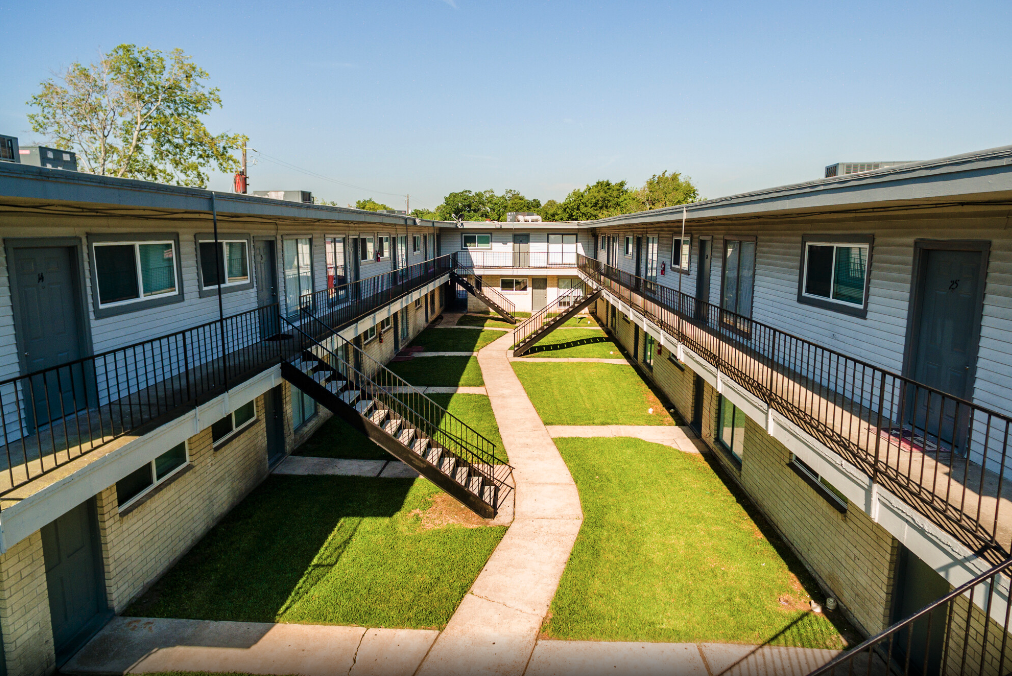
Have you ever wondered how to calculate the value of commercial real estate? In this blog, I will walk you through how to generate a market value when looking at apartments, office buildings, or mobile home parks. Commercial real estate is much different than residential real estate as property value is not valued based upon comparable sales. Comparable sales are used to generate the CAP rate in the market, but not used to calculate the value of the property.
An example to explain this better would be a 20 unit property on the Southside of town vs a 20 unit property on the Northside of town. The difference in value for either property could be tens of thousands or $100,000+ depending upon the “Net Income” of the property. But more on this later…
How to Get Started Calculating Apartment Value
The first step in the process is receiving a rent roll and a T-12 (trailing 12 months of financials) from the owner of the property. The T-12 is the most important document in order to get an understanding of how well the property is operated. In general, the apartments in which we invest our money range from a 40-50% expense ratio. If we see a ratio at 20-30 there is a good chance the owner is fudging the numbers. On the other hand, if we receive the T-12 and it is showing a 65-75% expense ratio, we know there is great upside potential.
The expense ratios do differentiate on both mobile home parks and office buildings, so we will solely focus on apartment value in this blog post.
Why do we want rent roll?
We want a rent roll to verify the gross income of the property. Gross income is what we can use to help calculate the Net income of the property when we get to that step. Oftentimes brokers and sellers inflate the gross income to make it look like they are offering a property at a better price. We only focus on the actual numbers being produced by the property!
What are property expenses?
In every apartment complex across the globe you will have expenses to maintain the property. You have property taxes. You have insurance costs. You have potential vacancy issues if a tenant moves out or you’re turning a unit. You may have property management. We hire third-party property managers to take care of all the issues at our properties. When we factor all of these expenses together and subtract that number from the gross income we determine our Net Operating Income (NOI).
Let me give an example:
A property produces $50,000/ Year in Gross Income
Expenses are currently costing $23,100 per year to run the property
The net income of the property is $26,900 per year.
Net Operating Income does not factor in debt against the property such as a mortgage. Mortgage costs differentiate between borrowers and are not considered an expense in the net income calculation.
After the NOI is generated we will use the market Capitalization rate (CAP Rate) to determine the value of the property. CAP rate will differ from city to city and even within certain larger metro areas. For example, a property in a lower-class part of town will have a higher CAP rate because of the risk involved. Whereas a property in the nicest part of the city will have a lower CAP rate because of the lower risk.
Remember this…
The lower the CAP rate the Higher the Value. The higher the CAP rate the Lower the Value.
Now that we have the CAP rate & NOI we can calculate the value of the property. This calculation is quite simple as I will show you below.
Exponential Returns in Commercial Real Estate
Once you get the hang of how to calculate value, commercial real estate can be fairly easy to understand. However, there is much more that goes into property underwriting than just getting it under contract at a market price. You will also want to consider the Debt Service Coverage Ratio, Capital Expenditures, Internal Rate of Return, Break Even Point, and much more covered in other blogs on our site!
The best part about commercial real estate investing is when we raise the net income on the property, the value is going to go up exponentially in relation to that. As properties get larger in size this exponential increase is much larger & can really help the return on investment to the investors in the deal.
The simple way to increase NOI is by decreasing expenses or raise the gross income per year. This is why we specifically look for deals which are past due for a rent increase and have high expense ratios. Two simple metrics that can return investors capital within the first 12-18 months instead of 5-7 years.
Want to Learn More About Passive Real Estate Investing?
f
*Schedule a Call* – Invest With Us
We would love to connect with you! If you are interested in investing passively in real estate please fill out the form below & you will receive an email with a link to Carter’s calendar to schedule a call.
